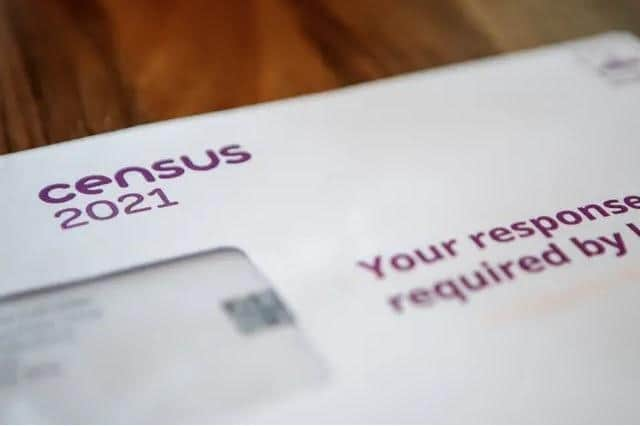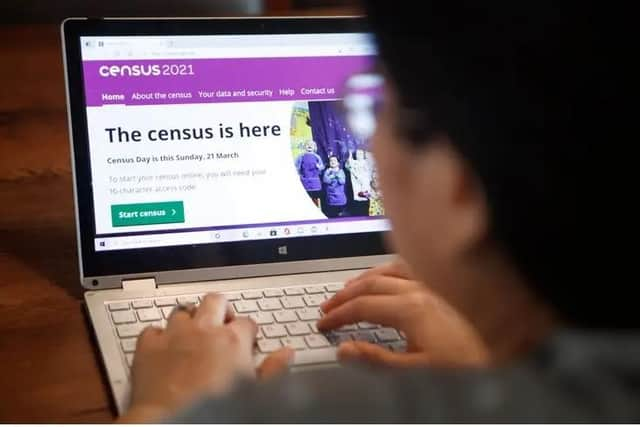CENSUS: Blackpool has a smaller and older population
and live on Freeview channel 276
The first results of the 2021 census are in – and they show Blackpool has seen its population shrink over the last decade.
The census takes place every 10 years, with every household in the UK required to take part.
Advertisement
Hide AdAdvertisement
Hide Ad

Now the first results have been released – and there’s been a fall in the number of people living in Blackpool.
On census day, 141,100 people were living in the area – down slightly from 142,065 in 2011, when the last census was carried out.
This also means the population density has fallen to 4,046 usual residents per square kilometre, down from 4,074 in 2011.
Advertisement
Hide AdAdvertisement
Hide AdThe census is crucial for the UK’s statisticians to understand how our population is changing, and plays a vital role in how our public services and government operate.


It shows the balance of men and women in the area has changed – Blackpool’s population is now 49.4% male and 50.6% female, meaning there is now a higher proportion of men in the area than 10 years ago.
In 2011, people living in Blackpool were 49.1% male and 50.9% female.
It also shows the area is aging – a decade ago the population was made up of 11% under-10s and 19.2% over-65s, but this had changed to 10.8% and 20.8% respectively by 2021.
Advertisement
Hide AdAdvertisement
Hide AdAcross England and Wales, the total population grew 6.3% over the past decade, from 56,075,912 in 2011 to 59,597,300 last year.
This included a 5.2% increase in the North West, where the population rose to 7,417,300 from 7,052,177 in 2011.
There were 24.8 million households in England and Wales on census day 2021, up from 23.4 million in 2011, with an average of 2.4 people in each household – the same as in 2011.
Historic populations of Blackpool:
1981: 145,776
1991: 146,069
2001: 142,284
2011: 142,065
2021: 141,100
Historic populations of the North West:
1981: 6,834,647
1991: 6,726,860
2001: 6,729,764
2011: 7,052,177
2021: 7,417,300
RESORT POPULATION IS GETTING OLDER
Blackpool has an ageing population, new Census figures outline, as the proportion of over-65s calling the area home rose in the last decade.
Advertisement
Hide AdAdvertisement
Hide AdThe Census takes place every 10 years, with the latest snapshot captured on March 21 2021.
Figures published by the Office for National Statistics show there were 29,300 people aged 65 and over living in Blackpool on census day last year – up from 27,239 in 2011, when the Census was last carried out.
It means the proportion of over-65s living in the area rose over the last decade – from 19.2% to 20.8%.
There were 46,600 people aged 29 and under living in Blackpool on March 21 last year, who accounted for 33% of the population – down from 49,463 (34.8%) in 2011.
Of them, 15,300 under-10s called Blackpool home.
Advertisement
Hide AdAdvertisement
Hide AdThis trend is reflected across England and Wales as a whole, where the population is ageing.
There were 11.1 million over-65s in 2021 – 18.6% of the population – up from 9.2 million in 2011 (16.4%) and 7.3 million (15.0%) 40 years ago.
Data from the 2021 census for England and Wales will be published in stages over the next two years, the ONS said.
Future releases will include figures on ethnicity, religion, the labour market, education and housing plus – for the first time – information on UK armed forces veterans, sexual orientation and gender identity.
Advertisement
Hide AdAdvertisement
Hide AdThe census was taken at a time when coronavirus restrictions were still in place across the UK, with people only allowed to leave their homes in England for recreation and exercise outdoors with their household or support bubble, or with one person outside their household, and the rule-of-six on outside gatherings not coming into place until the end of March.
The Census, which is used to understand how the UK's population changes over time, shows the balance of men and women across the country.
In Blackpool, 49.4% of the population was male and 50.6% was female last year – respectively, this compares to 49.1% and 50.9% 10 years ago.
The City of London (55.8%) had the highest male-to-female ratio, while Kensington and Chelsea (46.7%) had the lowest.
WHAT DO THE FIGURES MEAN?
Advertisement
Hide AdAdvertisement
Hide AdWe now have more robust figures on the size and characteristics of Blackpool’s population.
But how do they compare to estimates which are used by decision makers in central and local government to understand their communities’ needs?
Mid-year population estimates are produced annually by the Office for National Statistics and are based on the most recent census.
The ONS rolls forward information from registers for births, deaths and migration surveys to produce each year’s estimate – but it means the further away from the census, the more uncertain they are.
Advertisement
Hide AdAdvertisement
Hide AdONS statisticians estimated there were 138,381 people of all ages living in Blackpool as of mid-2020 – slightly below the 2021 census figure of 141,100.
Snapshot data from the census in March 2021 tells us there were 29,300 (20.8%) over-65s living in the area, showing little difference to the 28,433 (20.5%) estimated by the ONS.
There are more males in Blackpool than estimated by the ONS – 2021 census results revealed 69,700 males (49.4%) were usual residents, while the mid-2020 prediction was 68,740 (49.7%).
The latest estimates suggested there were 69,641 (50.3%) females in the area, and on census day, 71,400 (50.6%) said Blackpool was their home.
Advertisement
Hide AdAdvertisement
Hide AdThe ONS says population statistics are “vital in making a range of decisions and informing public debate".
During the coronavirus pandemic, estimates have been used to measure vaccine uptake at a national and regional level, while they are also used to measure unemployment rates, forecast pensions and make decisions about local services – such as the number of school places of the provision of health services for an ageing population.
The 2020 mid-year population estimate for England and Wales as a whole stood at 59.7 million – very close to the 2021 census figure of 59.6 million.
The ONS noted that population change in certain areas "may reflect how the coronavirus pandemic affected people’s choice of usual residence on census day".
“These changes might have been temporary for some and more long-lasting for others," it added.